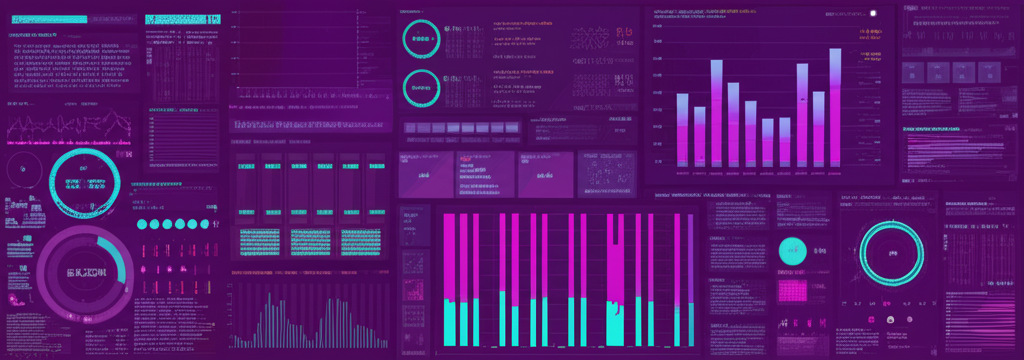Quantum Protocol
Whitepaper v1.0
Quantum Protocol Whitepaper
Next-Generation Cybersecurity Intelligence Layer for Web3
We're excited to announce the next chapter of our journey. ZetraX AI is rebranding to Quantum Protocol — a next-generation cybersecurity intelligence layer built for the future of Web3.
Our new direction is bold: combining artificial intelligence with quantum-resistant technology to secure decentralized systems against both today's and tomorrow's threats. But while the brand is evolving, everything you love about ZetraX remains — our tools, our vision, and our commitment to real-time, AI-powered Web3 security.
This whitepaper outlines our vision, technology stack, product suite, and roadmap for building the quantum-resistant future of Web3 security.
Key Innovations
- Hybrid Cryptographic Framework — Combining classical and post-quantum algorithms for maximum security and compatibility
- Dual-Signature Transaction Protocol — Ensuring transactions remain secure even in a post-quantum world
- Quantum-Resistant Messaging — Secure communications for DAOs and dApps with post-quantum encryption
- Smart Contract Certification — Verifying and certifying quantum resistance in smart contracts
- Decentralized Governance — Community-driven development through the ZTX token
Vision & Mission
Quantum Protocol is the evolution of ZetraX — a future-proof security stack built for the next wave of decentralized innovation. Our mission is to pioneer the next evolution of Web3 infrastructure through quantum-resistant technologies that secure digital assets, smart contracts, and decentralized communications against both contemporary threats and future quantum computing attacks.
Our comprehensive suite of solutions combines cutting-edge cryptographic innovations with enterprise-grade reliability to ensure that blockchain ecosystems remain secure in the post-quantum era. This isn't just a rebrand — it's a leap into a new era of security, one where AI and quantum resistance work together to defend the decentralized world.
Our Mission
To secure the decentralized future by building quantum-resistant infrastructure that protects digital assets, smart contracts, and communications against both current and future threats.
The Quantum Threat
Quantum computing represents both a revolutionary advancement in computational power and an existential threat to current cryptographic systems. As quantum computers scale up in qubit count and stability, they will eventually be able to break many of the public-key cryptographic systems that secure today's digital infrastructure, including blockchain networks.
Shor's Algorithm
Shor's algorithm running on a sufficiently powerful quantum computer could efficiently factor large integers and compute discrete logarithms, breaking RSA, ECC, and other cryptosystems that secure most blockchain transactions.
Time complexity: O((log N)³) for factoring N
Classical computers: O(e^(log N)^(1/3) (log log N)^(2/3))Grover's Algorithm
Grover's algorithm provides a quadratic speedup for searching unsorted databases and can be used to attack symmetric cryptography, reducing the effective security of AES-256 to roughly AES-128.
Time complexity: O(√N) for searching N items
Classical computers: O(N)While large-scale quantum computers capable of breaking current cryptography are not yet available, the "harvest now, decrypt later" attack vector means sensitive data encrypted today could be decrypted in the future when quantum computing matures. For blockchain systems where immutability is a core feature, this presents a unique challenge that requires proactive solutions.
Timeline of Quantum Threat
Present Day
Quantum computers with 100-1000 qubits exist but lack error correction needed to run Shor's algorithm at scale. Current systems pose no immediate threat to cryptography.
5-10 Years
Quantum computers with error correction may begin to threaten 1024-bit RSA and 256-bit ECC. Early adopters of post-quantum cryptography gain significant security advantages.
10-15 Years
Mature quantum computers likely capable of breaking most public-key cryptography in use today. Systems without quantum resistance become highly vulnerable.
Our Approach
Quantum Protocol takes a hybrid approach to quantum security, implementing both classical and post-quantum cryptographic algorithms in parallel. This strategy provides backward compatibility with existing systems while ensuring protection against future quantum threats.

Quantum Protocol's hybrid security approach combines classical and post-quantum cryptography
Our solutions leverage NIST-standardized post-quantum cryptographic algorithms, including CRYSTALS-Kyber for key encapsulation and CRYSTALS-Dilithium for digital signatures. These algorithms have undergone rigorous cryptanalysis and are designed to resist attacks from both classical and quantum computers.
Beyond cryptography, we employ artificial intelligence to enhance security through behavioral analysis, anomaly detection, and predictive threat modeling. This combination of quantum-resistant cryptography and AI-powered security creates a comprehensive defense system for the Web3 ecosystem.
Hybrid Cryptography
Dual-layer protection using both classical and post-quantum algorithms to ensure security and backward compatibility.
AI-Enhanced Security
Machine learning models that detect anomalies, predict threats, and enhance security decision-making.
Algorithm Agility
Flexible architecture that can rapidly adapt to new cryptographic standards and quantum developments.
Quantum Cryptography
The foundation of our quantum-resistant ecosystem is built on a hybrid cryptographic framework that implements both classical and post-quantum algorithms:
| Cryptographic Function | Classical Algorithm | Post-Quantum Algorithm |
|---|---|---|
| Key Exchange | X25519 (Curve25519) | CRYSTALS-Kyber-1024 |
| Digital Signatures | Ed25519 | CRYSTALS-Dilithium-3, FALCON-512 |
| Symmetric Encryption | AES-256-GCM | AES-256-GCM, ChaCha20-Poly1305 |
| Hash Functions | SHA-256 | SHA3-256, SHAKE256 |
| Zero-Knowledge Proofs | zk-SNARKs | zk-STARKs |
All cryptographic implementations undergo rigorous security audits and constant-time execution verification to prevent side-channel attacks. Our approach prioritizes algorithm agility, allowing for rapid updates as cryptographic standards evolve.
Example: Hybrid Key Encapsulation Mechanism (KEM)
// Hybrid KEM combining X25519 with Kyber-1024
async function hybridKeyExchange(peerPublicKey) {
// Classical key exchange
const x25519KeyPair = await crypto.subtle.generateKey(
{ name: 'ECDH', namedCurve: 'X25519' },
true,
['deriveKey']
);
// Quantum-resistant key exchange
const kyberKeyPair = await Kyber.keypair();
// Send both public keys to peer
const hybridPublicKey = {
classical: await crypto.subtle.exportKey('raw', x25519KeyPair.publicKey),
quantum: kyberKeyPair.publicKey
};
// Receive peer's hybrid public key and derive shared secrets
const classicalSharedSecret = await deriveX25519Secret(
x25519KeyPair.privateKey,
peerPublicKey.classical
);
const quantumSharedSecret = await Kyber.decapsulate(
kyberKeyPair.privateKey,
peerPublicKey.quantum
);
// Combine shared secrets
return combineSecrets(classicalSharedSecret, quantumSharedSecret);
}How It Works
- Generate both classical (X25519) and quantum-resistant (Kyber) key pairs
- Exchange both public keys with the peer
- Derive shared secrets using both algorithms independently
- Combine the shared secrets using a secure KDF (Key Derivation Function)
- Use the combined secret for symmetric encryption
This approach ensures that even if one algorithm is compromised (e.g., X25519 by a quantum computer), the overall security remains intact due to the quantum-resistant algorithm.
NIST Post-Quantum Cryptography Standards
Our implementation is based on the algorithms selected by the National Institute of Standards and Technology (NIST) in their Post-Quantum Cryptography Standardization process:
CRYSTALS-Kyber
- Module Lattice-based KEM
- Selected for key establishment
- Excellent performance characteristics
- We implement Kyber-1024 (highest security level)
CRYSTALS-Dilithium
- Module Lattice-based signature scheme
- Selected for digital signatures
- Balance of signature size and verification speed
- We implement Dilithium-3 (high security level)
Security Architecture
Quantum Protocol implements a defense-in-depth approach with multiple security layers:

Quantum Protocol's multi-layered security architecture
Defense Layers
- Algorithmic Security: Post-quantum algorithms resistant to known quantum attacks
- Implementation Security: Constant-time implementations to prevent side-channel attacks
- Protocol Security: Secure composition of cryptographic primitives
- Network Security: Post-quantum TLS for all communications
- Physical Security: Hardware security modules for critical operations
- Operational Security: Rigorous key management procedures and access controls
- Monitoring & Response: Advanced threat detection and incident response protocols
Security Principles
- Defense in Depth: Multiple layers of security controls
- Least Privilege: Minimal access rights for components and users
- Secure by Default: Security enabled without user configuration
- Fail Secure: Systems default to secure state on failure
- Complete Mediation: Verify every access to resources
- Open Design: Security through transparency, not obscurity
- Psychological Acceptability: User-friendly security mechanisms
Our security architecture is designed to provide comprehensive protection against both classical and quantum threats, with multiple layers of defense that work together to secure the entire system.
Threat Modeling
Comprehensive analysis of potential threats, including quantum computing attacks, side-channel vulnerabilities, and traditional Web3 exploits.
Security Audits
Regular third-party security audits of all cryptographic implementations, with a focus on quantum resistance and side-channel protection.
Incident Response
Dedicated security team with established procedures for detecting, responding to, and recovering from security incidents.
Side-Channel Attack Mitigation
Our implementations include specific protections against side-channel attacks, which could otherwise leak cryptographic keys:
- Constant-time execution: All cryptographic operations run in time independent of secret values
- Memory access patterns: Protected against cache-timing attacks
- Power analysis resistance: Implementations designed to minimize power consumption variations
- Blinding techniques: Used to prevent differential analysis
Implementation Architecture
The Quantum Protocol ecosystem is structured as a layered architecture that integrates with existing Web3 infrastructure while providing quantum-resistant security:
ZetraX Quantum Ecosystem
├── Application Layer
│ ├── DeFi Protocols
│ ├── NFT Marketplaces
│ ├── DAOs
│ ├── GameFi
│ └── Enterprise Solutions
├── Integration Layer
│ ├── JSON-RPC Extensions
│ ├── Web3.js/Ethers.js Plugins
│ ├── Wallet Connect Bridges
│ └── Smart Contract Templates
├── Core Services
│ ├── Quantum Key Management
│ ├── Transaction Processing
│ ├── Secure Messaging
│ ├── Oracle Networks
│ └── Consensus Mechanisms
└── Cryptographic Foundation
├── CRYSTALS-Kyber
├── CRYSTALS-Dilithium
├── FALCON
├── Classic Algorithms
└── Hybrid Signature SchemesThis layered approach allows for modular development and deployment, with each component providing specific functionality while maintaining compatibility with the overall system. The architecture is designed to be flexible and extensible, allowing for the addition of new components and capabilities as needed.
Key Architectural Components
Application Layer
The top layer where end-users interact with quantum-resistant applications across various Web3 domains.
- DeFi protocols with quantum-resistant transactions
- NFT marketplaces with secure ownership verification
- DAOs with quantum-resistant governance
- GameFi with secure asset management
- Enterprise solutions with regulatory compliance
Integration Layer
Bridges between existing Web3 infrastructure and Quantum Protocol's quantum-resistant services.
- JSON-RPC extensions for blockchain communication
- Web3.js/Ethers.js plugins for developer integration
- WalletConnect bridges for wallet interoperability
- Smart contract templates with quantum resistance
Core Services
Essential services that provide quantum-resistant functionality to the ecosystem.
- Quantum key management for secure key storage
- Transaction processing with dual-signature protocol
- Secure messaging with end-to-end encryption
- Oracle networks with quantum-resistant data feeds
- Consensus mechanisms with quantum security
Cryptographic Foundation
The base layer providing cryptographic primitives and algorithms.
- CRYSTALS-Kyber for key encapsulation
- CRYSTALS-Dilithium for digital signatures
- FALCON for compact signatures
- Classic algorithms for backward compatibility
- Hybrid signature schemes for maximum security
Interoperability Considerations
Quantum Protocol's architecture is designed to maximize interoperability with existing blockchain ecosystems:
- Backward Compatibility: All components maintain compatibility with existing Web3 standards
- Progressive Enhancement: Quantum resistance can be added incrementally to existing systems
- Standards Compliance: Implementation follows emerging standards for post-quantum cryptography
- Cross-Chain Support: Architecture supports multiple blockchain platforms with different consensus mechanisms
ZetraShield
ZetraShield is an AI-powered firewall with post-quantum cryptography (PQC) that simulates and intercepts malicious contract activity before execution. It provides real-time protection against smart contract exploits, phishing attempts, and other Web3 threats.
How It Works
- Intercepts all Web3 transactions before they're sent to the blockchain
- Simulates transaction execution in a secure sandbox environment
- Analyzes the simulation results using AI to detect malicious patterns
- Verifies contract signatures using quantum-resistant algorithms
- Alerts users to potential threats and provides detailed risk analysis
- Allows safe transactions to proceed with quantum-resistant signatures
Key Features
- Pre-execution transaction simulation with AI risk analysis
- Quantum-resistant signature verification for all transactions
- Real-time threat intelligence feed with community-sourced data
- Customizable security policies for different risk profiles
- Integration with popular wallets and dApps via browser extension
Technical Specifications
- CRYSTALS-Dilithium-3 for quantum-resistant transaction signatures
- AI-powered anomaly detection using transformer-based models
- WebAssembly implementation for browser-based execution
- Secure enclave integration for hardware-backed security
- Sub-100ms transaction analysis for minimal latency impact

ZetraShield's transaction analysis interface
Protection Metrics
ZetraPQ Wallet Engine
ZetraPQ Wallet Engine is a quantum-ready wallet layer with dual-mode signing and Shor-resistant encryption. It provides a secure foundation for managing digital assets in a post-quantum world.
How It Works
- Generates both classical and quantum-resistant key pairs from a single seed phrase
- Stores keys securely using quantum-resistant encryption
- Signs transactions with both classical and quantum-resistant signatures
- Verifies incoming transactions using appropriate signature verification
- Provides seamless integration with existing blockchain networks
- Enables secure migration path as networks adopt quantum-resistant standards
Key Features
- Hybrid key management with both classical and quantum-resistant keys
- Dual-signature transaction protocol for backward compatibility
- Quantum-resistant seed phrase generation and recovery
- Hardware security module (HSM) integration for enhanced security
- Cross-chain support with chain-specific quantum protection
Technical Specifications
- CRYSTALS-Kyber-1024 for key encapsulation
- Hierarchical deterministic (HD) wallet structure with quantum extensions
- AES-256-GCM encrypted local storage for secure key management
- Key splitting between extension storage and secure enclave for enhanced security
- BIP39 mnemonic phrase generation with additional quantum entropy layer

ZetraPQ's dual-signature transaction flow
Supported Chains
QuantumMesh Protocol
QuantumMesh Protocol provides secure messaging and coordination for DAOs and dApps via post-quantum cryptography and decentralized identities (DIDs). It enables confidential communication in a quantum-threatened environment.
How It Works
- Users establish quantum-resistant identities using DIDs
- Messages are encrypted with hybrid classical/quantum-resistant algorithms
- Perfect forward secrecy ensures past messages remain secure if keys are compromised
- Metadata protection minimizes information leakage
- Group messaging uses quantum-resistant access control
- Cross-platform clients ensure consistent security across devices
Key Features
- End-to-end encrypted messaging with post-quantum algorithms
- Decentralized identity (DID) integration for secure authentication
- Group messaging with quantum-resistant access control for team collaboration
- Metadata protection to minimize data leakage
- Cross-platform support for web, mobile, and desktop
Technical Specifications
- CRYSTALS-Kyber for key exchange with perfect forward secrecy
- CRYSTALS-Dilithium for message authentication and integrity verification
- Rust-based backend for memory safety and performance
- WebAssembly client libraries for browser integration
- Libp2p networking with quantum-resistant transport security

QuantumMesh's secure messaging architecture
Use Cases
DAO Governance
Secure voting and proposal discussions with quantum-resistant verification
DeFi Coordination
Private communication for liquidity providers and protocol developers
Enterprise Collaboration
Compliant messaging for organizations with long-term security requirements
dApp User Messaging
In-app communication between users with quantum-resistant encryption
Quantum Audit Layer (QAL)
The Quantum Audit Layer (QAL) provides smart contract certification for quantum resilience. It analyzes smart contracts for vulnerabilities to quantum attacks and certifies their resistance to future threats.
How It Works
- Smart contracts are submitted for quantum vulnerability analysis
- Static analysis tools identify cryptographic vulnerabilities
- Formal verification confirms quantum resistance properties
- Remediation recommendations are provided for vulnerable contracts
- Quantum-resistant certificates are issued for compliant contracts
- On-chain registry maintains a record of certified contracts
Key Features
- Automated scanning for quantum vulnerabilities in smart contracts
- Certification of quantum resistance with on-chain verification
- Remediation recommendations for vulnerable contracts
- Continuous monitoring for new quantum threats
- Integration with development workflows via GitHub actions
Technical Specifications
- Static analysis tools for cryptographic vulnerability detection
- Formal verification of quantum resistance properties
- Quantum-resistant certificate issuance with CRYSTALS-Dilithium
- On-chain registry of certified contracts with verification API
- CI/CD integration for automated quantum security testing

QAL's contract certification dashboard
Certification Levels
Level 1: Basic
No direct cryptographic vulnerabilities, but may use external services with quantum risk
Level 2: Intermediate
Uses quantum-safe cryptographic primitives but may have indirect dependencies
Level 3: Advanced
Fully quantum-resistant with formal verification of security properties
Wallet Architecture
The ZetraPQ Wallet Engine is implemented as a browser extension that provides quantum-resistant cryptography alongside traditional Web3 functionality. It serves as a secure bridge between decentralized applications (dApps) and blockchain networks.

ZetraPQ Wallet's architecture overview
Core Architecture Components
Key Management System
- Hybrid Cryptographic Schema
- Traditional Keys: Secp256k1/Ed25519 for backward compatibility
- Quantum-Resistant Keys: CRYSTALS-Kyber-1024 for key encapsulation
- Signatures: CRYSTALS-Dilithium-3 for quantum-resistant signatures
- Hash Functions: SHA3-256 and SHAKE256
- Key Derivation
- Hierarchical Deterministic (HD) wallet structure with quantum-resistant seed extension
- BIP39 mnemonic phrase generation with additional quantum entropy layer
- Dual derivation paths: one for classical keys, one for quantum-resistant keys
- Secure Storage
- AES-256-GCM encrypted local storage
- Key splitting between extension storage and secure enclave (when available)
- Optional hardware security module (HSM) integration
Transaction Processing Pipeline
- Transaction Construction
- Support for both classical and quantum-resistant transaction schemas
- Automatic dual-signing of transactions (both classical and PQC signatures)
- Fee optimization for larger quantum-resistant signatures
- Network Integration
- Primary Web3 chains (Ethereum, Polygon, Solana, etc.)
- Layer 2 solutions with quantum-resistant bridges
- Cross-chain atomic swaps with hybrid security
- Validation Layer
- Runtime verification of signature validity
- Quantum-resistant zero-knowledge proofs for privacy (when applicable)
- Replay attack protection with quantum-resistant timestamps
User Interface Layer
- Wallet Management
- Account creation with educational quantum security explanation
- Visual differentiation between quantum-protected and classical-only assets
- Progressive security levels (basic → advanced → quantum-resistant)
- Transaction Interface
- Simplified transaction signing with security level indicators
- Advanced options for quantum protection levels
- Gas/fee estimation with quantum signature overhead
- Settings and Configuration
- Customizable quantum security thresholds
- Recovery mechanisms with multi-factor authentication
- Hardware wallet integration options
Extension Structure
quantum-web3-wallet/
├── manifest.json
├── background/
│ ├── keyManager.js # Hybrid key management system
│ ├── quantumCrypto.js # WASM wrapper for liboqs
│ ├── transactionManager.js # Transaction construction and signing
│ └── networkProvider.js # Chain communication layer
├── contentScript/
│ ├── inpageProvider.js # dApp communication bridge
│ └── secureMessageBus.js # Quantum-resistant messaging
├── popup/
│ ├── components/ # React UI components
│ ├── pages/ # Wallet interface pages
│ └── App.js # Main application
├── lib/
│ ├── liboqs.wasm # WebAssembly build of liboqs
│ ├── boringssl.wasm # WebAssembly build of BoringSSL
│ └── utils/ # Helper functions
└── config/
└── chains.json # Chain configurationsCryptographic Integration
Example: Generating a hybrid keyring
async function generateHybridKeyring(entropy) {
// Generate quantum-resistant seed extension
const quantumEntropy = await generateQuantumRandomness(32);
const combinedEntropy = combineEntropy(entropy, quantumEntropy);
// Generate traditional HD wallet
const hdWallet = await HDWallet.fromEntropy(combinedEntropy);
// Generate quantum-resistant keys
const kyberKeypair = await Kyber.keypair(combinedEntropy);
const dilithiumKeypair = await Dilithium.keypair(combinedEntropy);
return {
hdWallet,
quantumKeyring: {
kyber: kyberKeypair,
dilithium: dilithiumKeypair
}
};
}Example: Creating a dual-signed transaction
async function createProtectedTransaction(tx, classicalKeys, quantumKeys) {
// Standard signature using secp256k1
const classicalSignature = await signWithClassicalKey(
tx.hash,
classicalKeys.privateKey
);
// Quantum-resistant signature
const quantumSignature = await Dilithium.sign(
tx.hash,
quantumKeys.dilithium.privateKey
);
return {
...tx,
signatures: {
classical: classicalSignature,
quantum: quantumSignature
}
};
}Security Considerations
Threat Model
- Man-in-the-middle attacks during key exchange
- Side-channel attacks on cryptographic operations
- Quantum computing advancements timeline
- Browser extension specific vulnerabilities
- "Harvest now, decrypt later" attacks
Defense Mechanisms
- Constant-time cryptographic implementations
- Post-quantum TLS for all API communications
- Secure memory management and anti-debugging measures
- Protection against extension API exploitation
- Regular security audits and penetration testing
Messaging Tech Stack
The QuantumMesh Protocol is built on a comprehensive technology stack for quantum-resistant encrypted messaging, using CRYSTALS-Kyber for key exchange, with liboqs and BoringSSL as cryptographic foundations.

QuantumMesh Protocol's secure messaging architecture
Cryptographic Foundation
Core Cryptographic Libraries
- liboqs (Open Quantum Safe): Primary implementation of post-quantum algorithms
- BoringSSL: Google's OpenSSL fork with additional security hardening
- Hybrid approach: Implementing both classical (X25519) and post-quantum (Kyber) algorithms
Specific Algorithms
- Key Exchange: CRYSTALS-Kyber-1024 (strongest NIST-standardized variant)
- Digital Signatures: CRYSTALS-Dilithium-3 (balance of security and performance)
- Symmetric Encryption: AES-256-GCM (still quantum-resistant)
- Hash Functions: SHA3-256 and SHAKE256 (resistant to Grover's algorithm)
Backend Architecture
Server Infrastructure
- Language: Rust or Go (memory safety + performance)
- Framework:
- Rust: Actix-web or Tokio
- Go: Gin or Echo
- Deployment: Docker containers with Kubernetes orchestration
- Cloud Provider: AWS or GCP with hardware security modules (HSMs)
Database
- Message Store: PostgreSQL with encrypted columns
- Key Management: Dedicated HSM or specialized key management service
- Message Queuing: Redis or RabbitMQ for asynchronous operations
Security Components
- Certificate Authority: Self-hosted with post-quantum signatures
- Authentication: FIDO2/WebAuthn with PQ extensions
- Perfect Forward Secrecy: Implemented through ephemeral key exchanges
Client Applications
Mobile Applications
- Native Apps:
- iOS: Swift with libp2p networking
- Android: Kotlin with CameraX for QR scanning
Desktop Applications
- Electron-based cross-platform app
- Secure storage: OS-specific secure enclaves when available
Common Client Features
- Local encryption: All messages encrypted/decrypted on-device
- Key verification: QR code scanning for out-of-band verification
- Ephemeral messaging: Auto-delete functionality
Implementation Example: Kyber Integration
// Example of using liboqs for Kyber key exchange
#include <oqs/oqs.h>
#include <stdio.h>
#include <stdlib.h>
int main() {
// Initialize OQS
OQS_STATUS status = OQS_SUCCESS;
// Create a Kyber key encapsulation mechanism (KEM)
OQS_KEM *kem = OQS_KEM_new(OQS_KEM_alg_kyber_1024);
if (kem == NULL) {
printf("ERROR: OQS_KEM_new failed\n");
return EXIT_FAILURE;
}
// Generate keypair
uint8_t *public_key = malloc(kem->length_public_key);
uint8_t *secret_key = malloc(kem->length_secret_key);
status = OQS_KEM_keypair(kem, public_key, secret_key);
if (status != OQS_SUCCESS) {
printf("ERROR: OQS_KEM_keypair failed\n");
return EXIT_FAILURE;
}
// Client encapsulates shared secret using public key
uint8_t *ciphertext = malloc(kem->length_ciphertext);
uint8_t *shared_secret_e = malloc(kem->length_shared_secret);
status = OQS_KEM_encaps(kem, ciphertext, shared_secret_e, public_key);
if (status != OQS_SUCCESS) {
printf("ERROR: OQS_KEM_encaps failed\n");
return EXIT_FAILURE;
}
// Server decapsulates shared secret using ciphertext and secret key
uint8_t *shared_secret_d = malloc(kem->length_shared_secret);
status = OQS_KEM_decaps(kem, shared_secret_d, ciphertext, secret_key);
if (status != OQS_SUCCESS) {
printf("ERROR: OQS_KEM_decaps failed\n");
return EXIT_FAILURE;
}
// Verify both parties have the same shared secret
bool secrets_match = true;
for (size_t i = 0; i < kem->length_shared_secret; i++) {
if (shared_secret_e[i] != shared_secret_d[i]) {
secrets_match = false;
break;
}
}
if (secrets_match) {
printf("Success: shared secrets match!\n");
} else {
printf("ERROR: shared secrets do not match!\n");
}
// Clean up
OQS_KEM_free(kem);
free(public_key);
free(secret_key);
free(ciphertext);
free(shared_secret_e);
free(shared_secret_d);
return EXIT_SUCCESS;
}Implementation Challenges
Technical Challenges
- Larger key and signature sizes (Kyber-1024 public key: ~1.5KB)
- Increased computational requirements for post-quantum operations
- Mobile device constraints (battery, bandwidth, storage)
- Evolving standards requiring algorithm agility
Solutions
- Optimized implementations for constrained devices
- Compression techniques for keys and signatures
- Adaptive security levels based on device capabilities
- Modular architecture for algorithm replacement
Enterprise Integration
Quantum Protocol provides comprehensive enterprise solutions that enable organizations to achieve quantum readiness while maintaining compatibility with existing systems and workflows.

Quantum Protocol's enterprise integration dashboard
Enterprise Suite
- Risk Assessment: Quantum vulnerability scanning for existing blockchain infrastructure
- Migration Planning: Customized roadmaps for transition to quantum-resistant systems
- Regulatory Compliance: Documentation and controls to meet emerging quantum security regulations
- Integration Services: Seamless implementation of quantum-resistant technologies
- Training & Support: Knowledge transfer and ongoing technical assistance
Industry-Specific Solutions
Financial Services
- Post-quantum transaction security for digital asset custody
- Quantum-resistant trading platforms and settlement systems
- Compliant key management solutions for regulatory requirements
Healthcare
- Secure patient data exchange using quantum-resistant encryption
- Privacy-preserving health record systems with post-quantum guarantees
- Compliant infrastructure for healthcare blockchain applications
Supply Chain
- Quantum-resistant provenance tracking and verification
- Secure multi-party computation for confidential supply chain data
- Tamper-proof IoT integration with quantum-grade security
Government & Defense
- High-assurance solutions meeting stringent security requirements
- Long-term data protection against future quantum threats
- Secure communication channels with post-quantum guarantees
Integration Process
- 1Assessment - Comprehensive evaluation of existing infrastructure and quantum vulnerabilities
- 2Strategy Development - Customized quantum readiness roadmap aligned with business objectives
- 3Proof of Concept - Targeted implementation of quantum-resistant solutions in controlled environments
- 4Phased Deployment - Gradual rollout of quantum-resistant technologies with minimal disruption
- 5Monitoring & Optimization - Continuous assessment and improvement of quantum security posture
Enterprise Case Study: Global Financial Institution
A leading financial institution with over $500B in assets under management implemented Quantum Protocol's enterprise solutions to secure their digital asset custody platform:
- Challenge: Ensure long-term security of digital assets against quantum threats while maintaining regulatory compliance
- Solution: Implemented ZetraPQ Wallet Engine with HSM integration and custom regulatory reporting
- Results:
- 100% of critical transactions now protected with quantum-resistant signatures
- Achieved compliance with emerging quantum security regulations
- Reduced security incident response time by 65%
- Minimal disruption to existing workflows and customer experience
Roadmap & Vision
Our roadmap is designed to deliver quantum-resistant security solutions to the Web3 ecosystem in a phased approach, starting with near-term milestones and progressing to long-term strategic goals.
Near-Term (6-12 Months)
Product Development
- Launch ZetraShield browser extension with AI-powered threat detection
- Release ZetraPQ Wallet Engine with dual-signature transaction support
- Integrate QuantumMesh Protocol into leading DAO platforms
Community Building
- Launch developer grants program for quantum-resistant dApps
- Partner with leading Web3 security firms for audits and certifications
Mid-Term (12-24 Months)
Technology Expansion
- Implement Quantum Audit Layer for smart contract certification
- Develop cross-chain bridges with quantum-resistant security
- Explore hardware security module (HSM) integration for key management
Ecosystem Growth
- Expand ZTX token utility with staking and fee sharing mechanisms
- Partner with enterprise clients for quantum readiness assessments
- Establish research collaborations with leading cryptography institutions
Long-Term Vision (24+ Months)
Quantum Supremacy Defense
- Develop advanced cryptographic algorithms resistant to quantum supremacy attacks
- Implement decentralized key management systems with quantum-resistant properties
- Establish global quantum security standards for Web3 infrastructure
Decentralized Quantum Security
- Create a decentralized quantum security network with community-driven threat intelligence
- Develop AI-powered quantum threat prediction models
- Establish a quantum security education program for Web3 developers
Conclusion
Quantum Protocol is committed to building the quantum-resistant future of Web3 security. Our comprehensive suite of solutions, combined with our community-driven governance model, will ensure that the decentralized ecosystem remains secure and resilient in the face of evolving threats.
We invite you to join us on this journey as we pioneer the next evolution of Web3 infrastructure. Together, we can build a quantum-secure future for all.